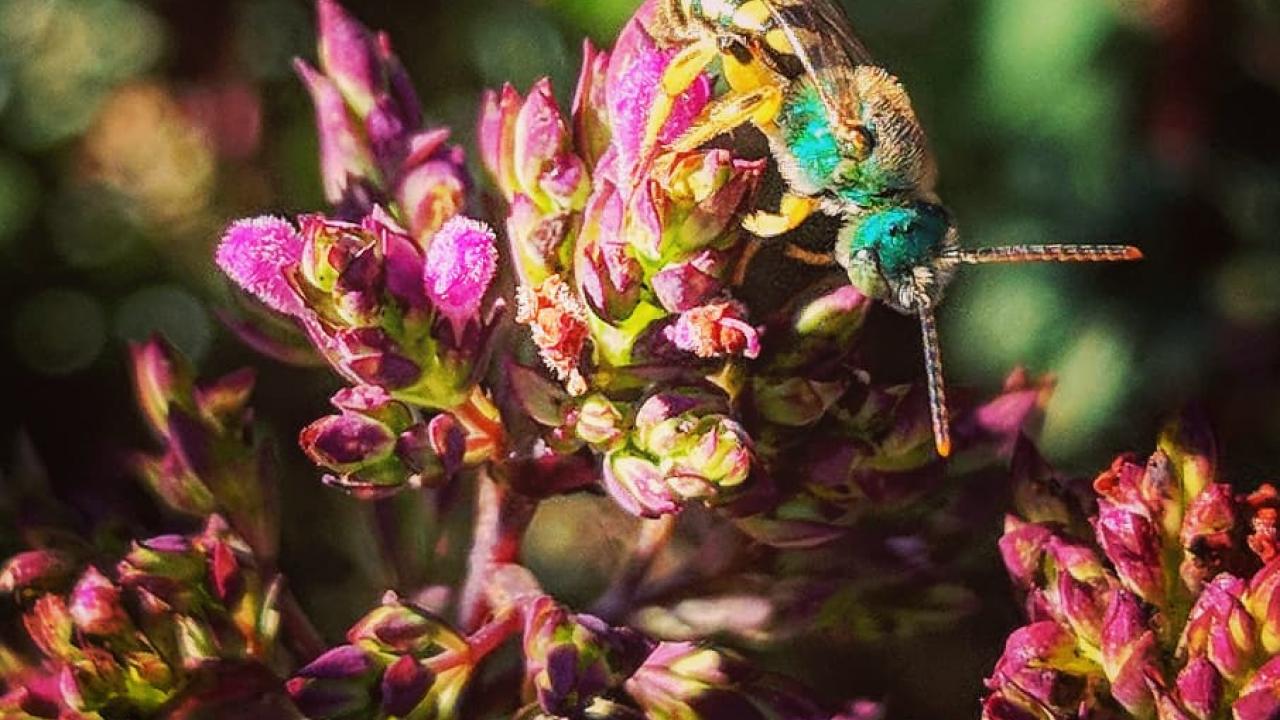
Support California native bees with these 10 plants
Gardening to support our native bees
Since native bee species differ in the season when they emerge from overwintering, bee gardens should contain plants with attractive flowers at different times of the year. The Urban California Native Bee Survey demonstrated that “. . . with the right bee plants, one small urban garden can attract forty to fifty species of native bees”.
The plants included here were selected based on information available through this work and that of others both in the Bay Area and the Sacramento Valley. These plants were chosen for spring, summer and fall bloom, low to medium-low watering need, low maintenance requirements and the variety of bee species they attract.
Click here to download a .pdf of Get to know these 10 bees and 10 plants
Learn more about California native bees here!
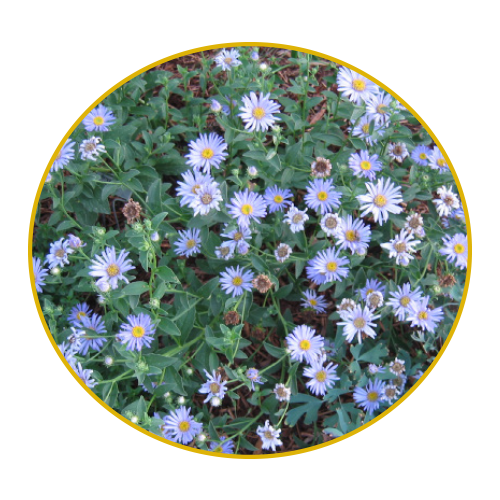
Frikart’s aster, Aster × frikartii ‘Mönch’
Frikart’s aster, Aster × frikartii ‘Mönch’ is a herbaceous perennial that flowers throughout summer. Its lavender-blue daisies pair well with silver foliage plants. An absolute butterfly magnet it also attracts many types of native bees, and provides them with both pollen and nectar. Deadheading spent flowers will extend its flowering season.
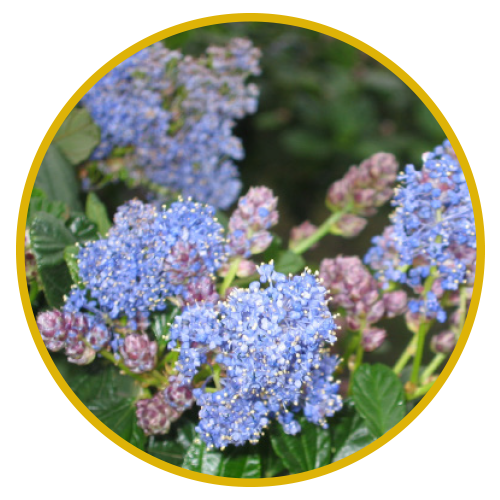
Ray Hartman’s California lilac, Ceanothus ‘Ray Hartman’
Ray Hartman’s California lilac, Ceanothus ‘Ray Hartman’, California lilacs are a large group of native shrubs that are an excellent source of pollen for early spring bees. ‘Ray Hartman’ is an upright large shrub that can be trained as a small tree and is covered with clear blue flowers in March. Unlike some other California lilacs, it tolerates summer irrigation and is relatively long-lived.
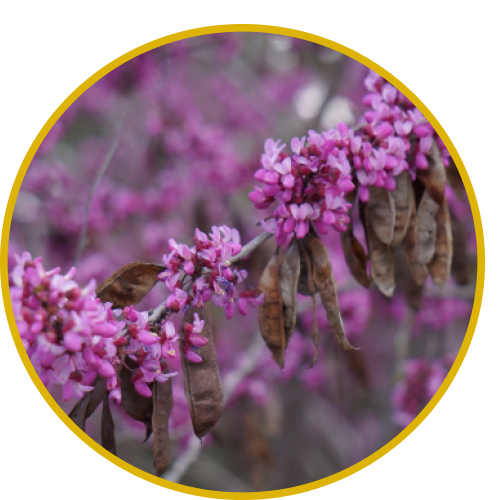
Western redbud, Cercis occidentalis
Western redbud, Cercis occidentalis is native to the foothills of California’s valley floor. It blooms in spring with magenta-pink pea-shaped flowers that are popular with a variety of native bees. If you see curious scoops on the edges of its leaves, you are doing a good job encouraging diversity in your pollinator garden because that means a population of leafcutter bees lives close by.
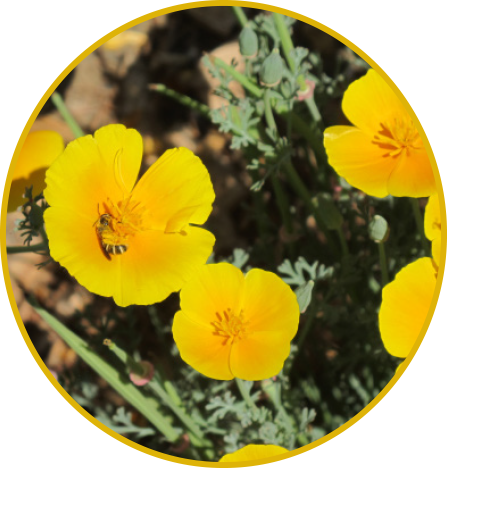
California poppy, Eschscholzia californica
California poppy, Eschscholzia californica is technically an annual, but they will “perennial-ize” by sprouting the following year from their roots and lower stems or by re-seeding. Look for sweat bees scrambling around the bottom of the flower and covering themselves with pollen.
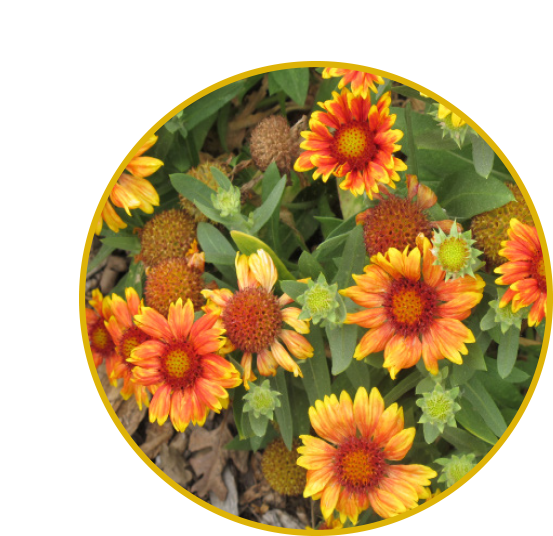
Blanket flower, Gaillardia × grandiflora
Blanket flower, Gaillardia × grandiflora is a colorful daisy-type flower popular with a number of native bees. In the Valley they attract long-horned bees like Melissodes which can be easily observed collecting nectar and pollen from the showy orange and yellow flowers. This plant may be short-lived in heavy soils.
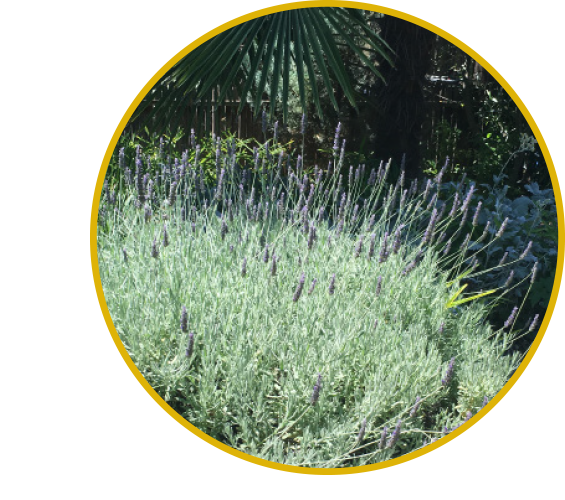
Goodwin Creek lavender, Lavandula × ginginsii ‘Goodwin Creek Grey’
Goodwin Creek lavender, Lavandula × ginginsii ‘Goodwin Creek Grey’ hybrid lavender is a tough and long-blooming sub-shrub that can be used to provide winter structure to your pollinator planting. Blooming early and lasting into summer, it is popular with large carpenter bees and a range of other smaller bees for its nectar. It can be pruned to shape, to increase branching, or to keep a compact form.
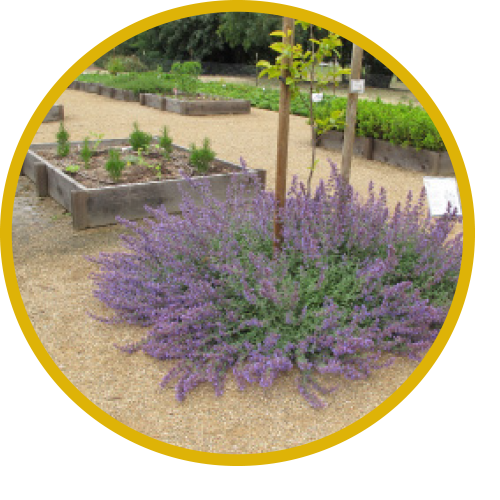
Catmint, Nepeta × fassenii
Catmint, Nepeta × fassenii is a tough, herbaceous and spreading perennial that blooms from spring to early summer. Cut this one back after its first bloom to promote reblooming. In our area catmint is sought by a wide variety of bees like leafcutters, digger bees, and blue orchard bees for its nectar while some of the smaller bees also use it for pollen.
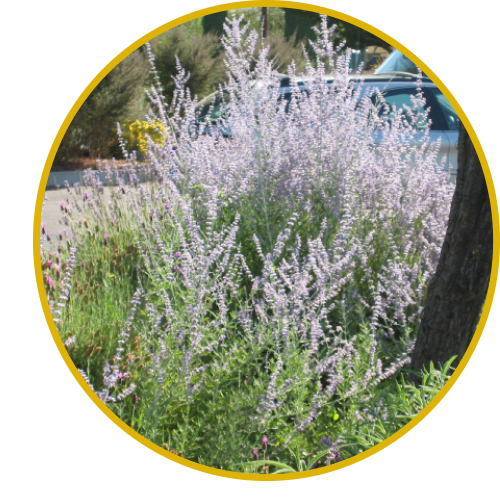
Russian sage, Perovskia atriplicifolia ‘Little Spire’
Russian sage, Perovskia atriplicifolia ‘Little Spire’ Visited by many types of native bees as well as honey bees, this upright deciduous perennial is tough and heat tolerant and thrives in harsh environments. This variety will reward you with vertical spikes of showy purple blooms late into the summer season. Cut it back to the base in winter.

Germander sage, Salvia chamaedryoides
Germander sage, Salvia chamaedryoides blooms with beautiful dark blue flowers from late spring to early summer and again in fall. It is a primary nectar source for a number of bee types. Male carder bees may be most noticeable as they set up territories around flowering patches and knock into other bees that enter their area. Deadheading spent flowers in early summer will help the blossoms (and the bees) return in fall.
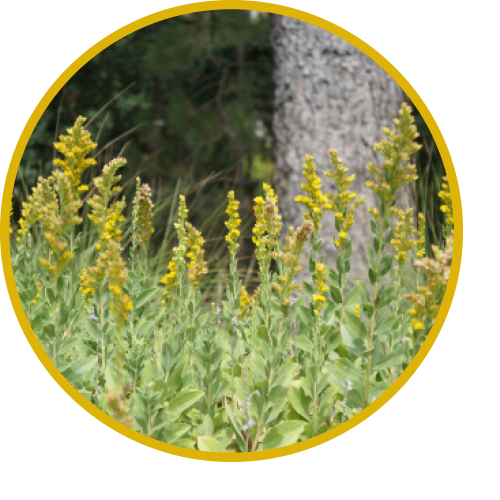
Cascade Creek goldenrod, Solidago californica ‘Cascade Creek’
Cascade Creek goldenrod, Solidago californica ‘Cascade Creek’ blooms summer into fall. Its flame-shaped yellow spikes of flower clusters are attractive to small bees and butterflies. Tough and drought tolerant, it is perfect in a native garden with other low-water plants. Cut flower spikes to the ground after bloom to encourage reblooming. This plant will overwinter as a small mat of green leaves.
